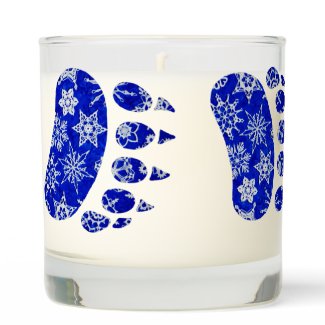
A reader recently requested I do an update on the progress of my garden, specifically if the flowers are faring better than the garden terrorists.

Cheap Prices on Mealy Bugs... You're kidding, right???
Four years ago, my garden suffered a vicious outbreak of mealy bugs. I think I picked them up at a specific nursery because everything I bought at that nursery that year was infected. I didn't notice in time to keep it from spreading to other plants. I initially thought the white sticky stuff on my plants was some kind of fungus from the water or something. Research helped me get a grip on reclaiming my potted plants, and I shared some of the things that worked for me in a blog post. That post is still to this day one of my most popular posts, nearly as popular as my three top snowflakes. Each summer, I get hundreds more hits on that page, presumably from people looking for ways to combat the mealies.

Over the years, readers have asked how I managed to rid my garden of these pesky pests, and every once in a while, someone asks if they are still gone.
Thankfully, I can answer at this time with a resounding YES!
Although the suggestions in my original post were helpful, the infestation was just too bad. I ended up having to throw out some of our more favorite plants and start over from scratch, including the hoya plant my husband had inherited from his father. I was very diligent, treating it with a rubbing alcohol-moistened Q-Tip every two days, and I even trimmed off what looked like the cleanest branches and attempted to get them to root in a deep vase of water so I could replant them. Unfortunately, the mealies won. The Lizard finally assured me it would be okay to discard it.
We went right to a local garden shop, thoroughly inspected a baby hoya plant of the same variety, and brought it home. It took two years to begin blooming, and it's the happiest plant we own now. It currently is on its fifth round of glorious blooms of the year. I think it's one of the most beautiful plants in the world.

In addition to discarding the treasured hoya heirloom, we also ended up discarding nearly all the pots we'd kept on the porch, where the infestation was the worst. Back then, I was into this rainbow pot craze. I tried to build a rainbow garden on the porch, with a wide variety of plastic pots. I've since learned terra cotta pots are healthier for the plants, so I've been gradually phasing out all the plastic pots. But also, I'd boiled all the infected pots at the end of the season the year we had the mealies, and two of the pots had mealies again the following years. No pot means that much to me. Didn't even kiss them goodbye.

Very thankfully, we have not seen any mealies since early 2013, when I discarded all the pots that had been infected, boiled and then infected again. However, gardening is hard work, even when you don't have mealy bugs.
We've had aphids. We've had slugs. We've had grasshoppers in biblical proportions. And we've had spider mites.



When I find aphids in the house, I put the plant outside and let my garden helpers take care of it. We didn't see a praying mantis the first couple of years we lived in the house, so we bought two pods, and we've not had to buy praying mantises since. Some of my neighbors have expressed their gratitude for our pods because they now have praying mantises, too, following years of not seeing them. The Lizard and I have seen only two this year, but I think there are more. They're just busy doing their job.
We bought lady bugs three times before we learned you have to provide water for the ladybugs to drink or they will fly away. We now have a very healthy ladybug population, and once again, our neighbors and especially their kids are thrilled with our occasional ladybug explosions.
We also have native spiders that assist with pest control. I am not a spider lover at all, but these little guys with their outstretched arms kind of grow on me, not literally, of course, and I've witnessed them doing their job.



We used caffeinated drinks to take care of the slugs. I don't really like doing anything to the slugs, but I don't like what the slugs do to the garden. Slugs are prevalent here, I've learned, when it rains a lot, which my garden really likes. We were extra wet in April and part of May this year, and it's been fairly dry since then. We get lots of clouds and lightning, but not much rain. So slugs have not been prolific this year.
Thank heavens. And thank heavens I can container water my garden.

Spider mites have been this year's foe. I think they come through the screen when I have the window open. They seem to infect the plants closest to the window every couple of weeks.
They've been awful a couple of times in the past. Like the mealy bugs, they are extremely difficult to get rid of. I've tried all the natural methods. Apple cider vinegar, rubbing alcohol and baking soda-infused water work as long they are reapplied every couple of days. But they also end up killing most of the already mite-damaged leaves on my indoor plants. I've rinsed the plants with water after application, but the leaves still fall off.
This last time around, I used commercial bug spray, let the plants sit for a few minutes, then generously rinsed them off in the kitchen sink with the mister. I also sprayed all the way around the window and all around the iron stand on which the plants sit. I sprayed the floor, and I sprayed the wall.
I'm not crazy about commercial bug spray, but every once in a while, I get so fed up with the well-fed pests, I buckle to temptation.
So far, two of the plants seem to be coming back to bouncy, happy life, and one isn't so sure yet. I'm keeping my eyes on them, trying to nurse them back to health.
One of the things I've noticed is both the aphids and the spider mites avoid the lavender, the sage, the rosemary and the little green onions I also grow indoors. However, the garden pests of all varieties have no qualms about nesting in the still very young neem tree I bought the year I had the mealy bug infestation. In fact, I bought two neem trees. I knew it would take a few years for the seedlings to mature enough to produce a scent that might inhibit the garden pests, and I knew they had to stay indoors because they can't survive our winds or our winter. One of the trees already died. Winter is hard on plants that weren't meant to be at 7,000 feet!
I've also used neem oil as instructed to combat my indoor garden pests. The oil may work, but man, does that stuff ever stink! I think it eliminates humans as well as bugs!!! So I don't use it often.
One other thing I've tried this year is diatomaceous earth sprinkled very lightly on the top of the soil of my indoor plants. This can be harmful to pets, and although I currently have none (we have to replace a section of floor ruined by the home's previous owners' pets before we can bring an animal into our abode), the neighbors all have pets that regularly visit our garden. So I do not use this stuff outside at all.
Diatomaceous earth also can hurt praying mantises, clearwings, katydids and ladybugs, so another good reason not to put it outside.
I've noticed a marked decrease in the tiny black no-see-ums or soil bugs that seem to thrive wherever indoor plants grow. The diatomaceous earth also is supposed to be good for the soil. I'm also incorporating it into my diet, a teaspoon in my vegan whey shake every other day. (I'm trying to keep my iron and protein high enough so I can donate blood when asked.) So the diatomaceous earth is a beneficial addition to my army, I think.

In other garden news, The Lizard built two raised bed gardens for me this summer. Then discovered the sealant he'd used could leach into the soil. So he built two more raised bed gardens.
The unsealed gardens house corn, spinach, tomatoes, onions, basil, oregano, carrots, bok choy, kohlrabi, squash, cucumbers, cantaloupe and peppers. One of the sealed beds has been planted with a variety of flowers. The second will be used for a dye garden next year. I didn't have time (or soil) to plant both of the non-food gardens this year.

Anyone who's been following my blog for a while knows I've struggled with tomatoes in Colorado. I had no problem growing them in New Mexico, but they've been a real challenge at the base of the clay foothills where I live now. Tomatoes are just about my favorite food of all time. Especially fresh tomatoes.
I currently have about 18 little tomatoes growing on my two tomato plants, and I am happy to report I just ate my first beef steak tomato of the year! It wasn't the prettiest tomato I've ever seen, and it wasn't exactly big, but it was bigger than the grape-sized tomatoes I have struggled to grow the last two years, and oh, did it add punch to a lovely Mediterranean salad! I am one very happy camper!

Anyone who's been following my blog for the last year may remember my porch pepper plants disappeared one at a time last year right before first frost. Because the plants were cut clean across at the base, one at a time, one each and every day for a whole week, we suspect someone thought my peppers were something else. And we hope they got a huge surprise when they tried smoking them.
Because none of the garden centers had pepper plants in September, I started all over again from scratch, growing Serrano, Poblano, Ancho, Cayenne, Santa Fe and Habanero peppers from seed. I'm finally beginning to see the fruits, or should I say, the peppers of my labor. We just harvested our first homegrown peppers since last September, and they made a WONDERFUL dish of homemade chicken enchiladas, the very same dish my dear husband made for me on our second date!







































lmao at the smoking peppers. May burn the throat a bit. Sounds like you got it under control indeed, will always be the odd pest, but they just want their picture taken. That was lots of pots too lol
ReplyDeleteI hope with all my heart whoever took my pepper plants burned, burned, burned, Pat. A fitting punishment! May their taste buds be forever memorable!
DeleteOne summer I had a dreadful time with spider mites - and they were on my rosemary and sage plants! Go figure. The sage just had to go, but my rosemary plant is at least 15 years old and I couldn't bear to part with it since I had raised it from seed. Using a combination of high-pressure spraying and pruning I did finally manage to get rid of the little buggers. Still have that rosemary plant. :)
ReplyDeleteNice raised beds! (Good work, Lizard.) Have you ever thought of growing indigo for your dyeing experiments? I stumbled across a post about it here: http://www.donnakallnerfiberart DOT com/2015/08/first-vat-of-homegrown-indigo/
:)
I've had two more outbreaks of spider mites since I wrote this, Sue, and I have a feeling they could come back again one more time before the cold weather sets in. But they are still staying away from the rosemary, sage and onions. Thankfully, I put an onion in each of the pots. Not all of them rooted, and the ones that did have been free of the mites.
DeleteI have not tried indigo yet, but I'm going to be chopping off my woad leaves after BikeMS, if they are still alive by then. I wish I had time to do it before we go!!!